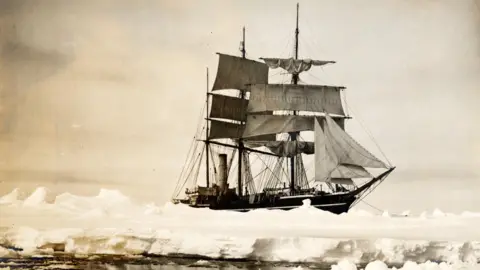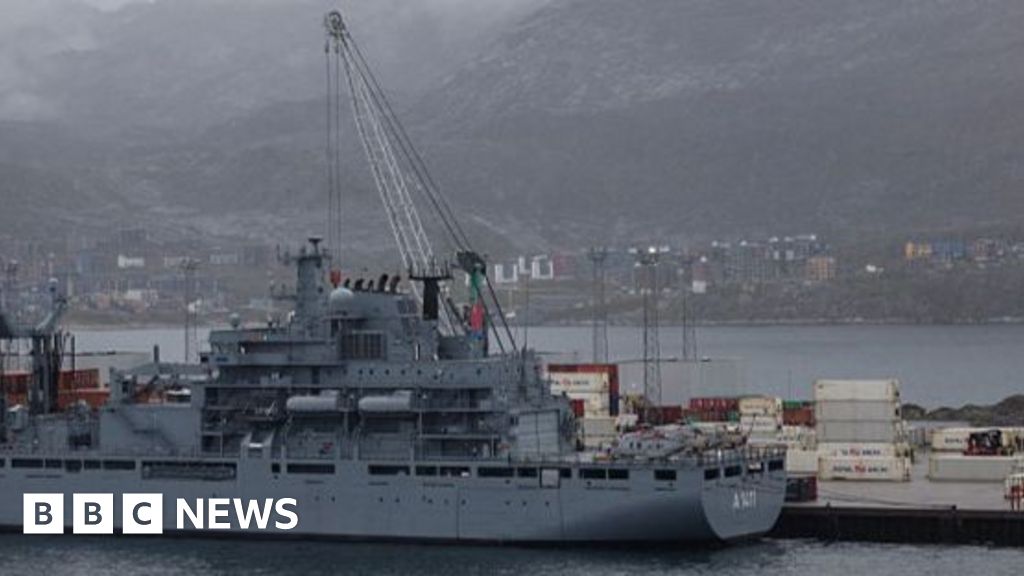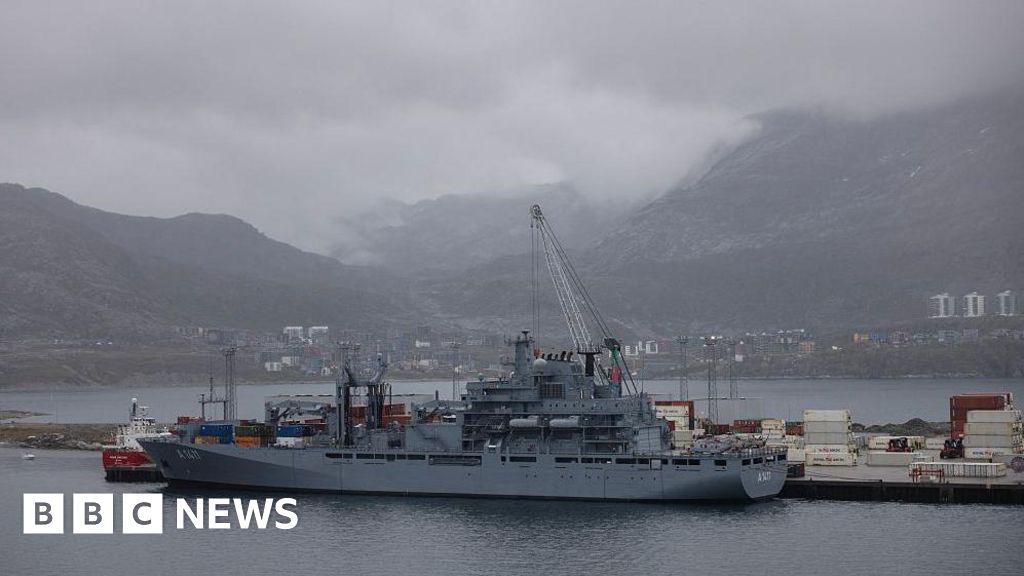One of the most iconic shipwrecks in polar history has been documented in remarkable detail for the first time. The Terra Nova, the vessel that took Captain Scott and his crew on their ill-fated expedition to the South Pole over a century ago, has been filmed on the ocean floor, revealing key features and marine life that have since colonized the wreck.
The British expedition in 1912 ultimately lost the race to the pole, leading to the death of Captain Scott and his companions on their return journey. New footage now showcases the Terra Nova, which lies at a depth of 170 meters off the coast of Greenland, adorned with sea life, yet still displaying distinct parts of its structure such as the wheel, winch, and mast.
The ship, discovered in 2012, received extensive exploration for the first time this year, with scientists expressing awe over its preservation within the oceanic environment. Leighton Rolley, a Science Systems Manager at REV Ocean, described the sight of the intact wheel amidst the wreckage as profoundly impactful, lamenting the most significant moments of the ship's history.
The Terra Nova was renowned for its role in polar exploration, measuring 57 meters in length with a sturdy wooden hull. After accomplishing multiple missions, including a scientific study during its Antarctic expedition, the ship met its demise in 1943 while transporting supplies during World War II.
As new footage emerges from the deep, it serves as a reminder of the heroism and tragedy that defined Captain Scott's exploration, a story that continues to fascinate and evoke emotion today. The wreck, while deteriorating, has transformed into a thriving marine ecosystem, filled with fish and corals, showcasing nature’s resilience and ability to reclaim human artifacts.
The British expedition in 1912 ultimately lost the race to the pole, leading to the death of Captain Scott and his companions on their return journey. New footage now showcases the Terra Nova, which lies at a depth of 170 meters off the coast of Greenland, adorned with sea life, yet still displaying distinct parts of its structure such as the wheel, winch, and mast.
The ship, discovered in 2012, received extensive exploration for the first time this year, with scientists expressing awe over its preservation within the oceanic environment. Leighton Rolley, a Science Systems Manager at REV Ocean, described the sight of the intact wheel amidst the wreckage as profoundly impactful, lamenting the most significant moments of the ship's history.
The Terra Nova was renowned for its role in polar exploration, measuring 57 meters in length with a sturdy wooden hull. After accomplishing multiple missions, including a scientific study during its Antarctic expedition, the ship met its demise in 1943 while transporting supplies during World War II.
As new footage emerges from the deep, it serves as a reminder of the heroism and tragedy that defined Captain Scott's exploration, a story that continues to fascinate and evoke emotion today. The wreck, while deteriorating, has transformed into a thriving marine ecosystem, filled with fish and corals, showcasing nature’s resilience and ability to reclaim human artifacts.


















